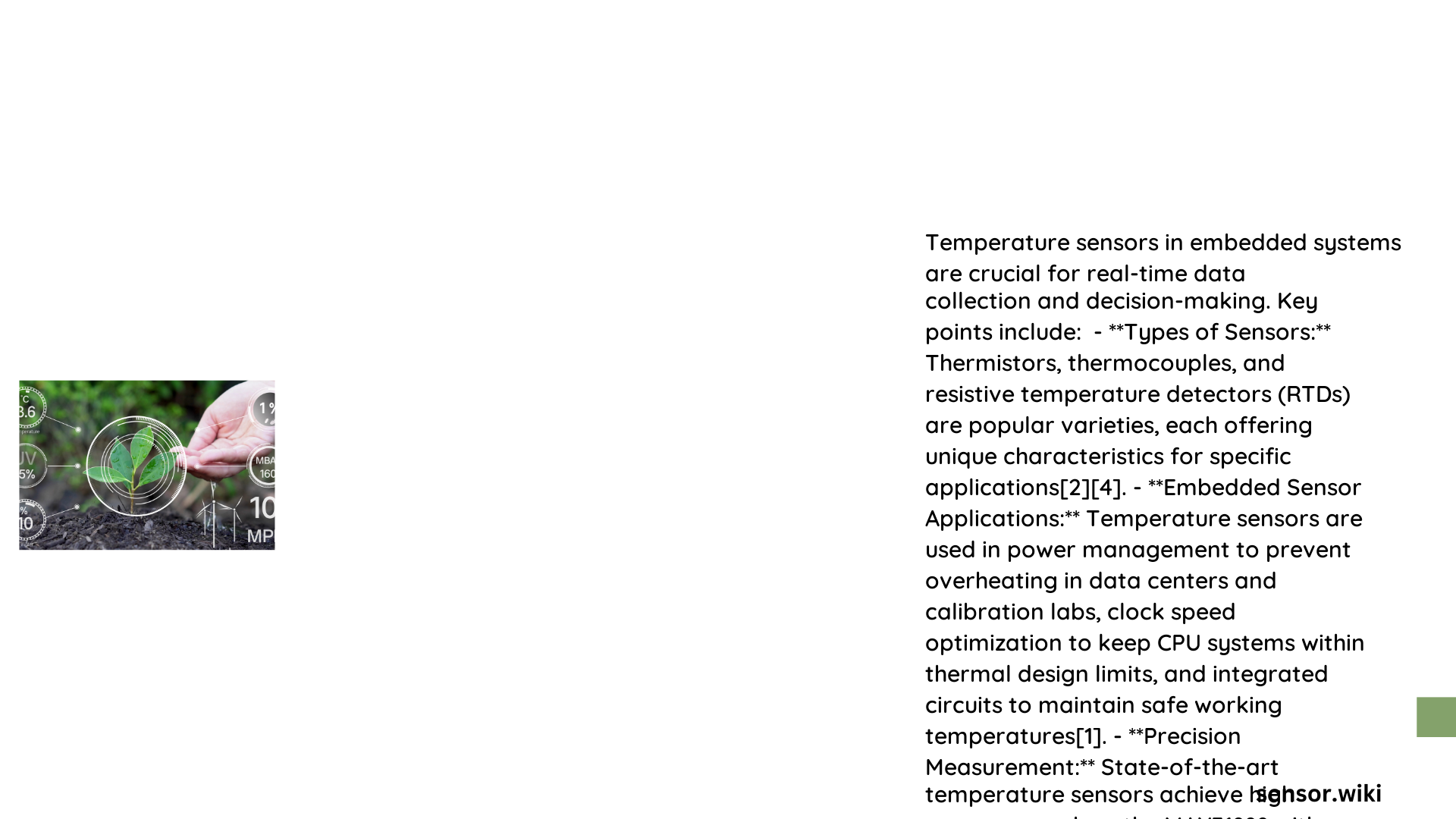Temperature sensor embedded systems represent sophisticated electronic solutions that enable precise environmental monitoring and control across diverse industrial, medical, and consumer applications. These intelligent systems integrate specialized temperature-sensitive components with microcontrollers to transform thermal variations into actionable digital data, providing critical insights into thermal dynamics with remarkable accuracy and reliability.
What Are Temperature Sensor Embedded Systems?
Temperature sensor embedded systems are sophisticated electronic architectures designed to measure, process, and communicate thermal information using specialized sensors and microcontroller technologies. These systems transform physical temperature variations into precise digital signals, enabling real-time monitoring and intelligent decision-making across multiple domains.
What Types of Temperature Sensors Exist?
Temperature sensors come in multiple configurations, each offering unique characteristics:
- Semiconductor Sensors
- Accuracy: ±0.1°C
- Temperature Range: -55°C to 125°C
- Low power consumption
-
Compact design
-
Resistance Temperature Detectors (RTDs)
- High linearity
- Excellent stability
- Temperature Range: -200°C to 600°C
-
Typical materials: Platinum (Pt100)
-
Thermocouples
- Widest temperature measurement range
- Robust mechanical design
- Requires cold-junction compensation
- Suitable for extreme environments
How Do Temperature Sensors Operate?
| Sensor Type | Operating Principle | Key Characteristics |
|---|---|---|
| Semiconductor | Bandgap voltage variation | High precision, low power |
| RTD | Resistance change with temperature | Linear response |
| Thermocouple | Thermoelectric effect | Wide temperature range |
What Are Critical Design Considerations?
When developing temperature sensor embedded systems, engineers must evaluate:
- Accuracy Requirements
- Environmental Conditions
- Power Constraints
- Communication Protocols
- Signal Processing Capabilities
How to Ensure Sensor Calibration?
Calibration involves:
– Establishing reference points
– Mapping sensor response curves
– Implementing compensation algorithms
– Periodic verification against standard references
What Communication Interfaces Are Commonly Used?
- I2C Protocol
- Low pin count
- Multiple device support
-
Moderate data transfer speeds
-
SPI Interface
- Higher bandwidth
- Dedicated communication lines
-
Suitable for high-speed applications
-
UART Communication
- Simple implementation
- Broad compatibility
- Lower data transfer rates
What Challenges Exist in Temperature Sensor Design?
Key challenges include:
– Noise reduction
– Signal conditioning
– Thermal drift compensation
– Maintaining measurement integrity
Best Practices for Implementation
- Use high-quality sensor components
- Implement robust filtering techniques
- Design for electromagnetic compatibility
- Consider thermal management strategies
- Select appropriate microcontroller platforms
Conclusion

Temperature sensor embedded systems represent a critical technological domain, bridging physical measurements with digital intelligence. Successful implementations require comprehensive understanding of sensor technologies, signal processing techniques, and system-level design considerations.
